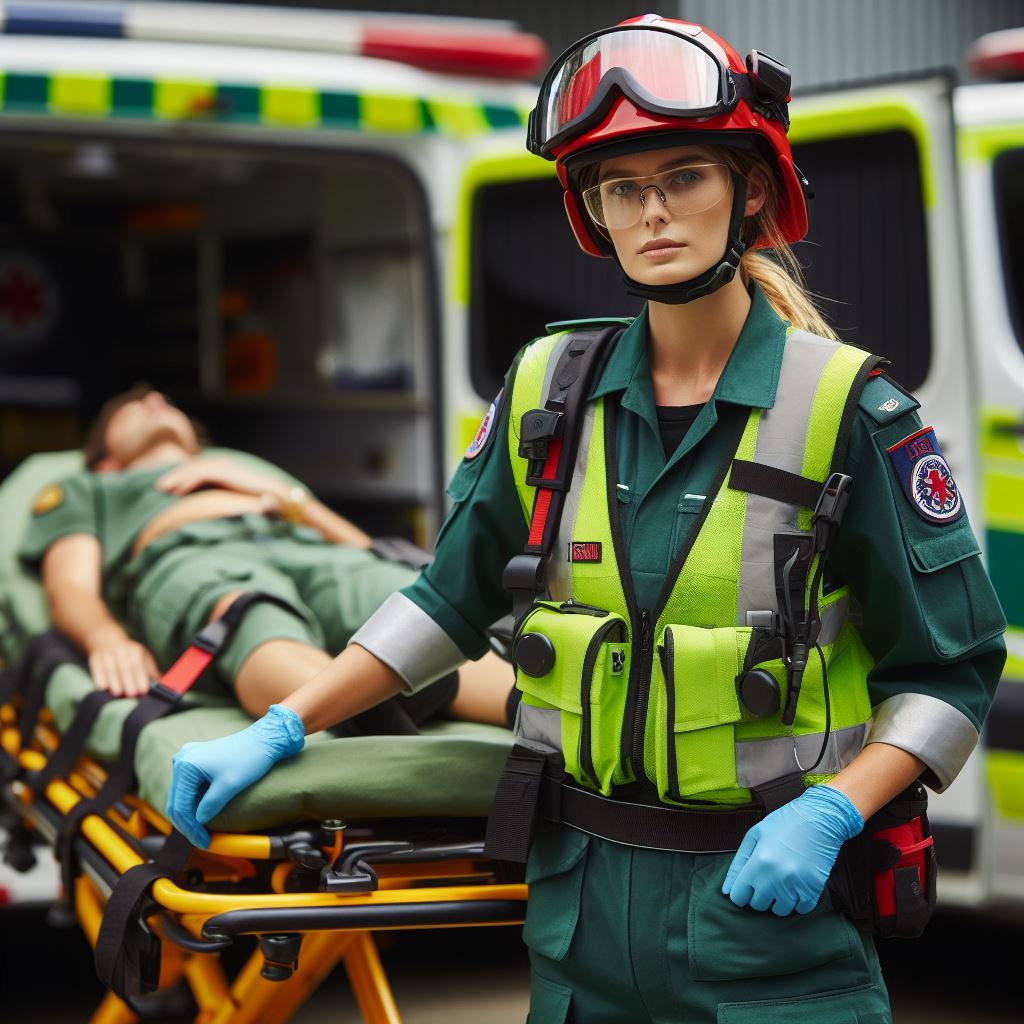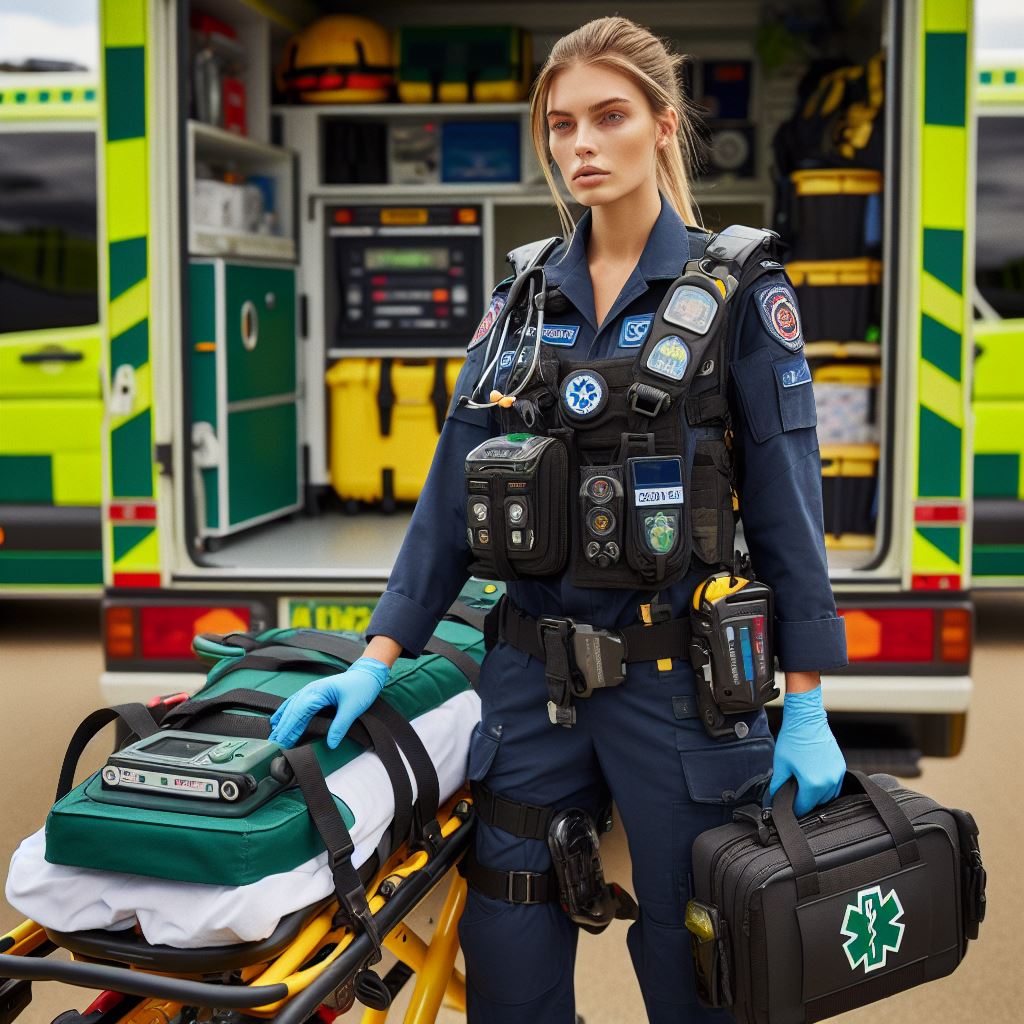Introduction
The role of technology in Aussie paramedicine is vital to improving patient care and outcomes. With innovative advancements, technology has transformed the way paramedics respond to emergencies.
This blog post will explore the different technologies used in paramedicine and their significance in enhancing pre-hospital care.
From telemedicine and mobile applications to wearable devices and drones, we will delve into how these technological tools streamline communication, increase efficiency, and save lives.
Additionally, we will discuss the challenges and future possibilities that arise with the integration of technology in this field.
Overall, this section aims to shed light on the important role of technology in ensuring timely and effective emergency medical services in Australia.
Evolution of Technology in Paramedicine
Technology has played a crucial role in shaping the field of paramedicine in Australia. Throughout the years, significant advancements and milestones have revolutionized patient care and outcomes.
Let’s delve into the historical development of technology in paramedicine and explore its impact.
Early Beginnings
- Paramedicine traces its roots back to the early 1900s in Australia.
- The introduction of the telephone system facilitated better communication between paramedics and healthcare facilities.
- Rudimentary medical equipment like stethoscopes and bandages helped stabilize patients at the scene.
Emergence of Ambulance Services
- In the 1940s, ambulance services started employing two-way radios, enabling real-time communication between paramedics and hospitals.
- Mechanical ventilators were introduced, revolutionizing the treatment of patients with respiratory distress.
- Defibrillators became a crucial tool in saving lives during cardiac emergencies.
Advancements in Communication
- In the 1970s, the introduction of mobile telephones enabled paramedics to directly communicate with medical professionals and access expert guidance.
- Satellite-based tracking systems enhanced dispatch efficiency, ensuring timely response to emergencies.
- The widespread adoption of computer-aided dispatch systems streamlined ambulance deployment and reduced response times.
Information Technology Revolution
- In the 1990s, the advent of electronic patient care records (ePCR) replaced traditional paper-based documentation, enabling faster information sharing.
- Portable ultrasound devices provided paramedics with valuable diagnostic information at the scene.
- Introduction of telemedicine technologies facilitated remote consultation between paramedics and specialized physicians.
Mobile Technology and Connectivity
- The proliferation of smartphones and mobile applications has empowered paramedics with instant access to medical references and drug databases.
- Connected devices like wearable monitors and defibrillators transmit vital signs and ECG data in real-time, enabling early intervention.
- Remote monitoring solutions allow paramedics to observe and guide patients from a distance, improving access to care in remote areas.
Drones and Robotics
- The integration of drones in paramedicine has revolutionized emergency response, enabling rapid delivery of medical supplies and equipment to remote locations.
- Robotic telepresence systems facilitate the virtual presence of physicians during critical situations, providing expert guidance to paramedics.
- Autonomous vehicles hold the potential to transform the landscape of paramedicine, ensuring prompt and safe transportation of patients.
Improved Patient Care and Outcomes
The evolution of technology in paramedicine has significantly enhanced patient care and outcomes:
- Quicker communication channels enable prompt response and early intervention, increasing survival rates.
- Faster and more accurate diagnosis improves treatment efficiency and reduces medical errors.
- Real-time data transmission helps hospitals prepare for incoming patients, optimizing resource allocation.
- Improved connectivity allows seamless coordination between paramedics, healthcare professionals, and hospitals.
- Enhanced training programs using simulation technology better prepare paramedics for various scenarios they may encounter.
In review, the historical development of technology in paramedicine has been a game-changer in Australia.
From basic medical tools to cutting-edge devices and digital platforms, technology continues to shape the field, saving lives and improving patient care and outcomes.
Read: Stress Management for Healthcare Administrators
Current Technological Applications in Paramedicine
The use of technology in paramedicine has significantly advanced the field, enabling better patient care and improved response times.
Here are some of the key technological applications currently used in Aussie paramedicine:
Electronic Patient Care Records and Digital Documentation
Paramedics now utilize electronic patient care records and digital documentation systems to efficiently store and retrieve vital patient information.
This technology allows for quick access to medical histories, allergies, and medications, ensuring accurate treatment.
Telemedicine and Telehealth in Remote Areas
Telemedicine and telehealth play a vital role in providing healthcare services in remote areas where access to immediate medical assistance is limited.
Through real-time video consultations, paramedics can connect with doctors and specialists to deliver more comprehensive care.
Wearable Devices and Sensors in Monitoring Patient Health
The use of wearable devices, such as smartwatches and health trackers, allows paramedics to monitor patients’ vital signs and overall health remotely.
These devices can track heart rate, blood pressure, and even detect falls, providing valuable information for accurate diagnosis and treatment.
Mobile Apps and Communication Systems for Better Coordination
Paramedics rely on mobile apps and communication systems to enhance coordination and response times.
These apps facilitate seamless communication between paramedics, emergency departments, and other healthcare providers, ensuring efficient transfer of patient information and timely emergency response.
All-in-all, technology has revolutionized the field of paramedicine in Australia, enabling paramedics to deliver more effective and efficient care.
Read: Navigating Healthcare Policies: An Admin’s Guide
Challenges and Benefits of Technological Integration
The challenges faced in integrating technology in paramedicine
Integrating technology in paramedicine poses several challenges that need to be addressed. One of these challenges is privacy concerns, as patient information must be securely stored and transmitted.
Ensuring confidentiality and preventing unauthorized access is crucial.
Another challenge is the training requirements for paramedics to adapt to new technologies. They need to receive proper training to effectively use and operate the latest equipment and software.
Constant education and skill development are essential in keeping up with technological advancements.
Your Personalized Career Strategy
Unlock your potential with tailored career consulting. Get clear, actionable steps designed for your success. Start now!
Get StartedInfrastructure limitations can also hinder the integration of technology in paramedicine.
Some rural areas may not have access to reliable internet connections or advanced medical facilities, making it difficult to implement technology-based solutions.
The potential benefits that technology brings to paramedicine
Despite these challenges, technology offers numerous benefits to paramedicine. One of the most significant advantages is improved communication.
With the help of technology, paramedics can communicate with healthcare professionals, share patient data, and receive real-time guidance.
This enhances collaboration and enables more effective emergency response.
Data collection is another area where technology plays a crucial role. With electronic health records and wearable devices, paramedics can gather vital patient information accurately and quickly.
This data can be shared with hospitals, allowing healthcare providers to be better prepared upon the patient’s arrival.
How technology improves communication, data collection, and decision-making
Technology also facilitates quick decision-making in emergency situations.
Accessing real-time data empowers paramedics to make informed decisions—choosing treatment plans or deciding whether to transport the patient to a nearby hospital or a specialized facility.
This improves patient outcomes and reduces response time.
Additionally, the integration of technology in paramedicine has the potential to enhance pre-hospital care.
Paramedics can use mobile applications and devices to assess patients’ conditions more accurately, administer medications, and monitor vital signs.
This leads to more precise diagnoses and personalized treatment plans.
Furthermore, technological advancements in telemedicine allow paramedics to connect with specialists remotely.
This enables paramedics to consult with experts in real-time, improving the quality of care provided in the field.
Basically, integrating technology in paramedicine presents challenges such as privacy concerns, training requirements, and infrastructure limitations.
However, the benefits technology brings to paramedicine, including improved communication, enhanced data collection, and better decision-making, outweigh these challenges.
By embracing technology, paramedics can enhance patient care and ultimately save lives.
Read: Emergency Scenes: Aussie Paramedics’ Challenges

Future Trends and Innovations
In recent years, technological advancements have had a profound impact on various industries, and the field of paramedicine is no exception.
As technology continues to evolve at a rapid pace, it is important to explore the emerging trends and innovations that are likely to shape the future of Aussie paramedicine.
Advancements in Artificial Intelligence and Machine Learning
- Artificial intelligence (AI) and machine learning are revolutionizing the way paramedics provide care.
- AI-powered algorithms can help analyze patient data and assist in making accurate diagnoses.
- Machine learning algorithms can continuously improve and enhance medical decision-making processes.
- Automated systems can provide real-time feedback and recommendations to paramedics in emergency situations.
- AI technology can also streamline administrative tasks, enabling paramedics to focus more on patient care.
Potential of Drones and Robotics in Emergency Response
- Drones have the potential to revolutionize emergency response by providing rapid access to remote or hard-to-reach areas.
- They can deliver essential medical supplies, such as defibrillators or medications, to patients in critical condition.
- Robots equipped with medical sensors can assess patients at the scene and relay vital information to paramedics.
- Telemedicine capabilities of robotics can enable remote consultation with medical experts, enhancing patient care even in remote areas.
- Drones and robots can significantly reduce response times and increase the efficiency of emergency services.
Ethical Considerations and Societal Impacts
- Data privacy and security must be ensured, as AI systems collect and analyze sensitive patient information.
- Robots and AI should never replace the human touch and empathy that are essential in patient care.
- Social acceptance and trust in these technologies will play a crucial role in their successful implementation.
- The potential job displacement of certain roles due to automation needs to be carefully considered.
Generally, the future of Aussie paramedicine will undoubtedly be shaped by emerging technologies.
Advancements in artificial intelligence and machine learning will revolutionize diagnosis and decision-making processes, improving patient outcomes.
Drones and robotics have the potential to enhance emergency response by providing quicker access to critical care and remote consultation capabilities.
However, it is important to navigate the ethical considerations and potential societal impacts associated with these technologies, ensuring that patient privacy and human-centric care remain a priority.
By embracing these innovations responsibly, Aussie paramedicine can achieve greater efficiency, effectiveness, and ultimately, better healthcare outcomes for all.
Stand Out with a Resume That Gets Results
Your career is worth more than a generic template. Let us craft a resume and cover letter that showcase your unique strengths and help you secure that dream job.
Get HiredRead: Aussie Paramedic Salaries: Expectations vs. Reality
Conclusion
In the end, this blog post highlighted the significant role of technology in Aussie paramedicine.
From advanced communication systems to innovative medical devices, technology has revolutionized healthcare delivery.
It has allowed paramedics to provide faster and more accurate assessments and treatment to patients, ultimately saving lives.
This blog post highlighted key points, including using telehealth for remote consultations, mobile apps for on-the-go medical records, and advanced monitoring devices for enhanced patient care.
The crucial role of technology in Aussie paramedicine cannot be overstated.
It has enabled paramedics to make more informed decisions, collaborate effectively with healthcare professionals, and provide comprehensive care to patients in emergency situations.
Looking ahead, the future of technology in this field seems promising. With advancements in artificial intelligence and wearable technology, there is immense potential to further enhance healthcare delivery.
Paramedics may benefit from features like predictive analytics, voice-activated assistance, and automated data analysis, allowing for faster, more efficient and personalized care.
Moreover, technology has the potential to revolutionize healthcare delivery by bridging geographical barriers, improving patient outcomes, and reducing healthcare costs.
It has the power to connect paramedics with specialized medical services, facilitate remote monitoring, and empower patients to take control of their health.
In closing, technology is a game-changer in Aussie paramedicine. As the field continues to evolve, embracing innovative technologies will be crucial in improving patient care and saving more lives.
By harnessing the full potential of technology, the future of healthcare delivery looks promising and exciting.




